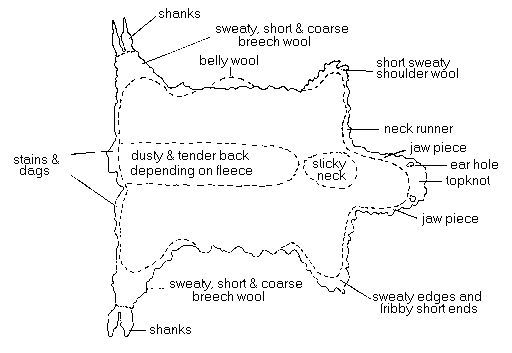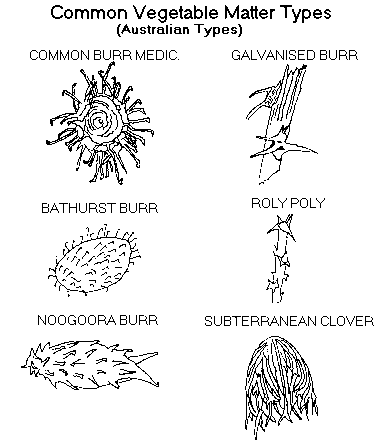Wool Fleece

The diagram shows a fleece with all the areas which may require skirting.
Skirting involves removing all inferior wool from the fleece wool. Each fleece is a little different, but most fleeces will only need fribs (sweat points), short crutchings, topknots and stain removed, as stain is the worst type of inferior wool to leave on the fleece. All fribs are removed from behind the front and back legs. If cotted edges and/or clumpy vegetable matter (burr on burr) are present these will also need to be removed. Pieces of skin, which remain on the fleece after shearing due to small cuts on the sheep by the shearing machine, will need removing.
The back and neck will only need removing if the wool is tender or water stained.
Alpaca Fleece
The best fleece comes from the saddle of the alpaca (i.e. Along the back, side, shoulder and rump). Neck fleece is next in quality, followed by the coarser fibre on the legs and belly. These different qualities should always
be kept separate. Stains, dags and burrs need to be removed. Before carding always take a handful of fleece and give it a good shake. Repeat this step until the fleece is completed. This will remove most of the loose vegetable matter.
Mohair
Remove all sweaty, short, discoloured or kempy mohair, cotted, dags and water stained fleece. With kempy areas, which are mainly along the back line of the animal, this will also have to be removed. In some cases it will be necessary to remove excessive vegetable matter.
Common Vegetable Matter Types (Australian Types)

Text and images © Tracy Bradberry
